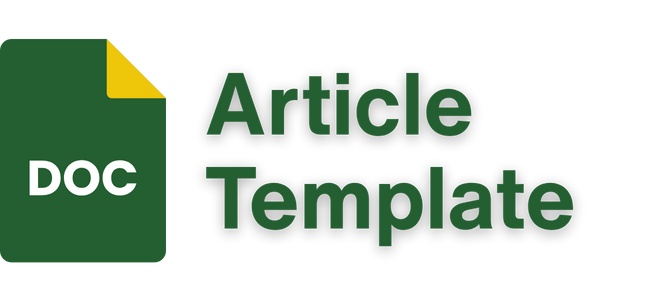HOUSING PREFERENCES OF FULL NEST 1 LIFECYCLE STAGE CUSTOMERS IN RESPONSE TO THE PANDEMIC
DOI:
https://doi.org/10.32815/jibeka.v16i1.465Keywords:
business management, marketing implementation, customer preferences, post covid-19 pandemic, architectural servicesArticle Metrics
Abstract
The purpose of this study is to define customer preferences for housing, especially customers who belong to the Full Nest 1 group in a family’s life cycle. The subject examined in this study focuses on the interior design and architecture industry in Surabaya, East Java. As a result of COVID-19, there has been a massive impact on the development sector which affected these industries. This is because both industries relied on face-to-face interactions to function. However, after the application of new regulations as a response to the pandemic, several changes are to be made regarding client interaction and project management. The effect of large-scale social distancing has affected operations, and caused a shift in customer’s preferences. This study uses a quantitative approach, in which changes in customer preferences are obtained through interviews with relevant sources in order to narrow down prioritized factors. The data is then processed through factor analysis, and is distributed as a survey to 30 respondents representing the Surabaya region. The data collection process of this research is carried out with a ranking scale and processed using the Conjoint analysis to understand the current priorities of customers in response to the pandemic.
Downloads
References
Andrianto, A., Qurniati, R., & Setiawan, A. (2016). Pengaruh Karakteristik Rumah Tangga Terhadap Tingkat Kemiskinan Masyarakat Sekitar Mangrove (Kasus di Desa Sidodadi Kecamatan Teluk Pandan Kabupaten Pesawaran). Jurnal Sylva Lestari, 4(3), 107–113. http://repository.lppm.unila.ac.id/2346/1/1193-3134-1-PB.pdf
Bandur, A. (2019). Penelitian Kualitatif Studi Multi-Disiplin Keilmuan dengan NVivo 12 Plus. Mitra Wacana Media.
Damanik, J., & Weber, H, F. (2006). Perencanaan Ekowisata dari Teori ke Aplikasi, Yogyakarta. Puspar UGM dan Penerbit Andi.
Fauzi, A. (2004). Ekonomi Sumberdaya Alam dan Lingkungan, Teori dan Aplikasi. Gramedia.
Fauzi, A. (2006). Pemodelan Sumberdaya Perikanan dan Kelautan untuk Analisis Kebijakan. Gramedia Pustaka Utama.
Gilani, H., Naz, H. I., Arshad, M., Nazim, K., Akram, U., Abrar, A., & Asif, M. (2021). Evaluating mangrove conservation and sustainability through spatiotemporal (1990–2020) mangrove cover change analysis in Pakistan. Estuarine, Coastal and Shelf Science, 249(June 2020), 107128. https://doi.org/10.1016/j.ecss.2020.107128
Harahap, N. (2010). Penilaian Ekonomi Hutan Mangrove dan Aplikasinya Dalam Perencanaan Wilayah Pesisir. Graha Ilmu. http://opac.ut.ac.id/detail-opac?id=30608
Haryati, S., Armawi, A., Peran, S., Dalam, P., Kawasan, M., Supraja, M., Ilmu, F., Universitas, P., & Mada, G. (2016). MASYARAKAT DESA ( Studi tentang Pemuda Pengelola Desa Wisata Kandri , Kecamatan Gunungpati , Kota Semarang , Provinsi Jawa Tengah ) Perjalanan bangsa Indonesia tidak lepas. Jurnal Ketahanan Nasional, 22(2), 117–136.
Irwanto. (2006). Keanekaragaman Fauna pada Habitat Mangrove. www.irwantoshut.com
Iwan, N. (2011). Ekowisata dan Pembangunan Berkelanjutan. Pustaka Pelajar.
Luom, T. T., Phong, N. T., Smithers, S., & Tai, T. Van. (2021). Protected Mangrove Forests and Aquaculture Development for Livelihoods. Ocean and Coastal Management, 205((2021) 105553). https://doi.org/10.1016/j.ocecoaman.2021.105553
Mumpuni, K. E., Susilo, H., & Rohman, F. (2015). Peran Masyarakat dalam Upaya Konservasi.
Onrizal, O., & Kusmana, C. (2008). Ecological study on mangrove forest in East Coast of North Sumatra. Biodiversitas Journal of Biological Diversity, 9(1), 25–29. https://doi.org/10.13057/biodiv/d090107
Puryono, S. (2009). Pelestarian Kawasan Hutan Mangorve Berbasis Masyarakat di Pantai Utara Provinsi Jawa Tengah. Universitas Diponegoro.
Schaefer, A., & Crane, A. (2005). Addressing Sustainability and Consumption. Journal of Macromarketing, 25(1), 76–92. https://doi.org/10.1177/0276146705274987
Stoddart, H. (2011). A Pocket Guide to Sustainable Development Governance. Stakeholder Forum.
Sutaryo, D. (2009). Penghitungan Biomassa: Sebuah pengantar untuk studi karbon dan perdagangan karbon. Wetlands International Indonesia Programme. http://www.wetlands.or.id/PDF/Penghitungan Biomassa.pdf
Tri, W. (2007). Konservasi Hutan Mangrove Sebagai Wisata Pendidikan. Envirotek : Jurnal Ilmiah Teknik Lingkungan, 1, 15–25.
Downloads
Published
How to Cite
Issue
Section
License
Happy reading. Do not forget to cite. Thank you.








